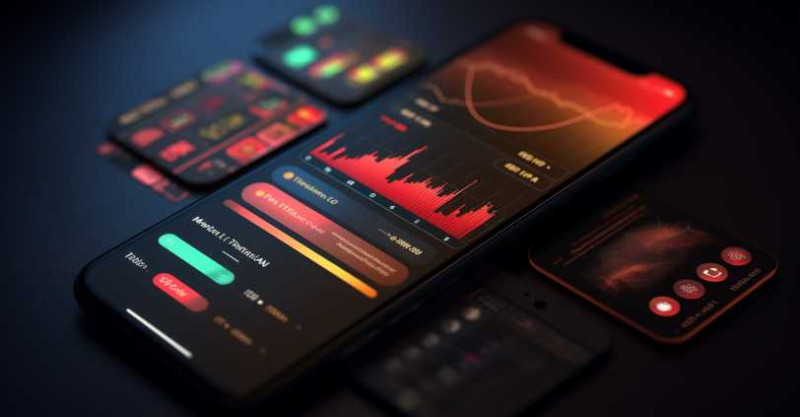
Introduction
Over the past decade, we have witnessed a monumental shift in the way people interact with financial markets, largely due to the rise in mobile trading. With the advent of powerful smartphones and high-speed internet connectivity, the financial world underwent a transformative phase, integrating cutting-edge technology with traditional trading practices. Gone are the days when one had to be tethered to a desktop or wait eagerly for the morning newspaper to scan the stock prices. Today, financial markets across the globe are accessible at the swipe of a finger, all thanks to mobile trading apps. These platforms have bridged geographical constraints, enabling traders from diverse backgrounds and regions to participate actively in global markets. As a result, the landscape of trading has become more inclusive, dynamic, and instantaneous.
As the trading realm became more digitized, the influx of mobile trading apps skyrocketed, each offering a myriad of features, tools, and interfaces. Amidst this vast sea of applications, the importance of selecting the right one, tailored to individual needs, has become more pronounced than ever. The app you choose acts as a gateway to the world of trading; it's more than just software—it's your trading companion. The correct app can be a catalyst, amplifying one's trading strategy by providing real-time data, intuitive user interfaces, robust security measures, and a suite of analytical tools. On the contrary, a mismatched app can be a bottleneck, creating hurdles in seamless trading, obfuscating critical market insights, or even compromising on the security of one's assets.
For many, trading is not just about numbers and charts; it's a personal journey marked by decisions, risks, and rewards. And this journey deserves the right companion. Just as an artist wouldn't settle for subpar brushes or a chef for blunt knives, a trader should emphasize the significance of their primary tool: the trading app. In the subsequent sections, we'll delve deeper into the nuances of mobile trading, the factors that set apart great apps from mediocre ones, and how you, as a trader, can make an informed choice in this digital age.
Why Choosing the Right Trading App is Crucial
The connection between user interface and trading efficiency
In the fast-paced world of trading, where every second counts and decisions need to be made swiftly, the user interface (UI) of a trading app becomes a trader's primary battlefield. The UI is not just about aesthetic appeal; it's the very foundation upon which the efficiency of a trader's actions rests.
A thoughtfully designed user interface intuitively guides the user through the complexities of trading, allowing for quick access to essential tools and information. In contrast, a cluttered or unintuitive interface can be a significant barrier, making even simple tasks cumbersome and time-consuming. Imagine needing to execute a time-sensitive trade, but being delayed due to the difficulty in navigating through the app. Such inefficiencies, even if they last only a few seconds, can result in missed opportunities or even financial losses.
Furthermore, the modern trader juggles multiple assets, tracks diverse markets, and perhaps even trades on different exchanges. A streamlined UI should allow seamless transitioning between these tasks, presenting data in a comprehensible manner without overwhelming the user. Visual cues, easy-to-read graphs, and clear typography are not just design choices; they directly impact a trader's ability to interpret information rapidly and accurately.
In essence, the connection between the user interface and trading efficiency is akin to the relationship between a well-organized workspace and productivity. Just as a tidy desk can enhance one's focus and efficiency, a well-designed trading app can significantly augment a trader's effectiveness, minimizing errors and optimizing the trading experience. In an environment where precision and speed are paramount, settling for an app with a subpar interface can be a costly oversight.
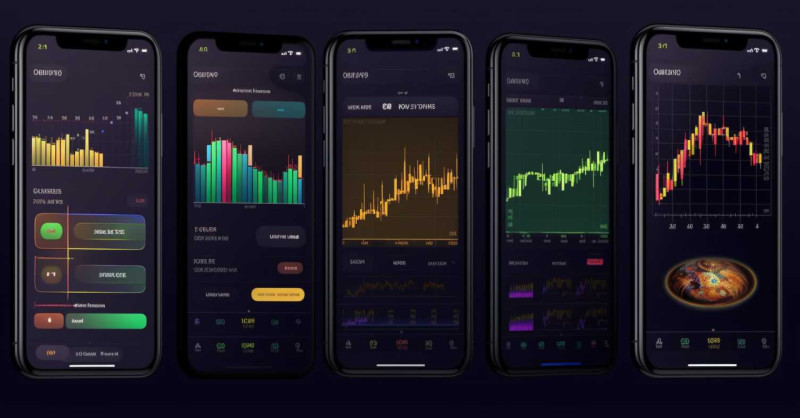
Importance of security in online trading
In the world of online trading, where vast sums of money are transferred and managed daily, security is not a mere feature—it's a cornerstone. As digital advancements have made trading more accessible and efficient, they've also attracted a slew of cyber threats. The choice of a trading app, hence, transcends usability and features; it's a critical decision that can safeguard or jeopardize a trader's assets.
The importance of security in online trading is multi-faceted:
Protection from Cyber Threats: Every day, malicious entities are devising newer and more sophisticated ways to breach digital fortresses. A trading app that prioritizes security ensures that it employs state-of-the-art encryption methods, regularly updates its defenses, and remains vigilant against potential breaches.
Trust and Credibility: In the financial realm, trust is paramount. When traders feel confident that their funds and personal information are safe, they can focus on trading strategies and decisions rather than being perpetually concerned about potential security lapses.
Financial Implications: A security breach doesn't just compromise data; it can result in significant financial losses. Unauthorized transactions, fraudulent activities, or even simple manipulations can lead to devastating financial ramifications for the trader.
Regulatory Compliance: Financial markets are tightly regulated, and adherence to security standards is not just a best practice but often a legal requirement. A trading app that prioritizes security ensures that its users are compliant with these regulations, shielding them from potential legal consequences.
Maintaining Market Integrity: A secure trading environment is vital for the overall health of financial markets. Repeated security lapses can erode confidence in digital trading platforms, leading to reduced participation and potentially destabilizing the markets.
In essence, the world of online trading is akin to a vast digital marketplace. Just as one would expect physical marketplaces to have security measures like surveillance cameras and guards, in the digital trading realm, the trading app acts as the primary line of defense. Opting for a platform that places security at the forefront is not just a wise choice; in today's threat-laden digital landscape, it's an absolute necessity.
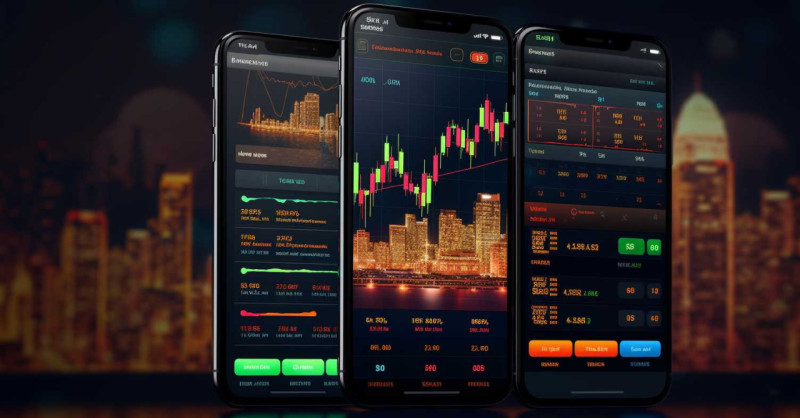
How the right app can enhance trading education and decision-making
As we venture deeper into the digital age, trading is no longer the sole domain of seasoned professionals perched in bustling trading floors. With an array of resources now available at our fingertips, everyone from college students to retirees is embracing the allure of the markets. Yet, the vastness and complexity of these markets necessitate not just access, but also knowledge and informed decision-making. Herein lies the critical role of trading apps: to educate and empower.
1. A Beacon in the Complex World of Trading:
For many, the realm of trading can seem like an impenetrable maze. A well-curated trading app serves as a guiding light, demystifying complex concepts through tutorials, webinars, and interactive lessons. It transforms abstract theories into tangible strategies, helping traders navigate the intricate pathways of the financial world.
2. Real-time Analytics for Informed Choices:
Trading is an ever-evolving landscape, with market conditions that change by the second. The right app provides traders with real-time analytics, from price fluctuations to market sentiments. By offering a holistic view of the market, it equips traders with the information they need to make timely and informed decisions.
3. Personalized Learning Journeys:
No two traders are the same. While one may be venturing into stocks, another might be exploring the volatile terrains of cryptocurrencies. Modern trading apps recognize this diversity, offering personalized educational resources that cater to the unique needs and aspirations of each trader.
4. Bridging Theory and Practice:
Knowledge, in the world of trading, is truly powerful when coupled with practice. The right trading app offers simulation tools and virtual trading environments, allowing traders to test their strategies, hone their skills, and gain confidence without risking real capital.
5. Decision-support Tools:
Beyond education, the decision-making process in trading requires precise tools – from algorithmic predictions to sentiment analysis. A robust trading app integrates these tools seamlessly, ensuring that traders aren't just reacting to the market, but proactively strategizing their next move.
In conclusion, trading is as much about knowledge and strategy as it is about intuition and timing. In this intricate dance, a well-designed trading app serves as both a tutor and an ally. It educates, informs, and empowers, ensuring that every decision made is not a mere roll of the dice but a calculated step towards financial growth.
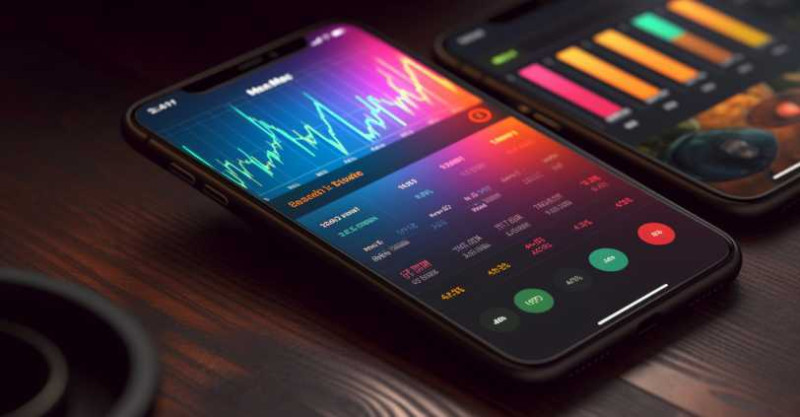
Factors to Consider When Choosing a Trading App
User Interface and Usability
When delving into the realm of trading apps, the myriad of options can seem overwhelming. But at the heart of the decision-making process lie a few core considerations that can guide a trader towards the ideal choice.
A paramount factor to keep in mind is the app's user interface and overall usability. At the intersection of simplicity and advanced features, the ideal app strikes a harmonious balance. It gracefully caters to both the novice trader, who might be looking for a straightforward and intuitive experience, and the seasoned expert, who requires a suite of advanced tools at their disposal.
Furthermore, in the fast-paced world of trading, speed isn’t just a luxury—it's a necessity. An app's responsiveness can mean the difference between capitalizing on a market opportunity and watching it slip away. Therefore, beyond the allure of its design or the breadth of its features, the efficiency with which an app responds to commands, processes trades, and delivers real-time information becomes instrumental in providing traders with the edge they need.
In essence, when evaluating trading apps, one must seek a platform that feels like an extension of oneself—a tool that, while packed with features, remains unobtrusive, and whose speed complements the trader’s desire for timely actions and decisions.
Security Features
In the vast digital marketplace of trading apps, where transactions and data flow ceaselessly, security emerges as a critical pillar in the selection process. As traders entrust both their financial assets and personal information to these platforms, the importance of robust security features cannot be understated.
Delving into the intricacies of security, one must consider the encryption levels that an app employs. Top-tier trading apps utilize high-grade encryption to ensure that data—whether it's transaction details or personal information—is transmitted and stored in a way that's impenetrable to malicious entities. This encryption acts as a digital fortress, safeguarding a trader's assets and details against potential breaches.
Equally crucial is the implementation of two-factor authentication (2FA). Beyond the traditional username and password, 2FA introduces an additional layer of security, often leveraging a secondary device or unique code to verify a user's identity. This added step, while seemingly simple, significantly enhances the app's defense mechanisms, thwarting unauthorized access attempts.
Lastly, the dynamic landscape of cybersecurity means that threats evolve continuously. In this ever-changing environment, regular security updates are paramount. The best trading apps maintain a vigilant stance, continuously updating their defenses to counter new vulnerabilities and potential threats.
In essence, as traders navigate the digital waves of financial markets, the chosen trading app should serve as a steadfast vessel—fortified, vigilant, and always ready to defend against the lurking threats of the cyber ocean.
Trading Tools and Features
Another significant dimension in the labyrinth of choosing the right trading app is the array of trading tools and features it offers. These tools are the very instruments that traders wield in their digital endeavors, and thus, their depth, versatility, and precision are of utmost importance.
At the forefront is the diversity of assets the app allows for trading. A versatile platform will grant traders access to a broad spectrum of assets—from traditional stocks and forex to the more contemporary realms of cryptocurrencies. The ability to delve into varied markets, sometimes simultaneously, offers traders flexibility and the opportunity to diversify their portfolios. The right app should seamlessly accommodate these varied interests, providing the tools and infrastructure required for each type of asset.
Complementing this asset diversity is the need for real-time data and analytics. Markets are living entities, pulsating with changes every second. An efficient trading app ensures that traders are always in sync with these rhythms, offering them real-time data that's both accurate and actionable. Coupled with this, advanced analytics can break down this data, offering insights, trends, and patterns, helping traders make more informed decisions.
Lastly, the range of order types available can profoundly impact a trader's experience. Whether it's limit orders, stop orders, or more advanced conditional orders, the flexibility to choose and execute specific order types allows traders to implement their strategies with precision. It provides them with control, allowing them to dictate the terms of their trades based on their market predictions and risk appetites.
To encapsulate, the quest for the right trading app is akin to seeking a reliable co-pilot in the vast skies of financial markets. The tools and features it offers should resonate with a trader's needs, ensuring that their journey is not just smooth but also empowered, informed, and strategic.

Educational Resources
Amidst the bustling cacophony of numbers, charts, and market movements, a trader's journey is as much about learning as it is about executing. This emphasizes the importance of educational resources in a trading app. An ideal platform doesn't just serve as a conduit for trades but also as a hub for continuous learning and growth.
A rich repository of tutorials becomes the bedrock for both novices and experts. For beginners, these tutorials can illuminate the intricate pathways of trading, demystifying jargon and elucidating strategies. For seasoned traders, they offer a chance to refine skills, explore new frontiers, or simply revisit fundamental concepts.
In our interconnected digital age, webinars have emerged as powerful educational tools. They bring together experts and enthusiasts, offering live sessions where market trends are dissected, strategies are discussed, and queries are addressed. A trading app that hosts or provides access to regular webinars ensures its users remain updated, engaged, and always a step ahead in their trading journey.
Furthermore, the written word, through articles and research papers, can be a potent source of knowledge. These articles, curated by market analysts and trading experts, delve deep into market dynamics, offering insights, forecasts, and analyses. They act as a compass, guiding traders through the ever-fluctuating landscapes of global markets.
Beyond passive learning, interactive tools that allow traders to test their strategies play a pivotal role. Simulation environments or "sandbox" modes enable traders to apply their knowledge, experiment with strategies, and learn from simulated trades without the risk of real financial implications. It's a safe playground, fostering learning through experience.
In the grand tapestry of trading, a well-rounded app recognizes that every trader is also a perpetual student. By offering a blend of educational resources and interactive tools, it ensures that this learning journey is rich, rewarding, and always in tune with the ever-evolving world of trading.
Fees and Commissions
In the intricate dance of numbers that defines the trading world, the decimals often matter as much as the whole numbers. This brings to the fore the importance of understanding and considering fees and commissions when selecting a trading app. After all, the costs associated with trading can significantly impact returns and overall trading experience.
Every trading app comes with its own fee structure, which can range from fixed fees to percentages, or even a combination of both. Some platforms might offer lower fees for higher trade volumes or different fees for different asset types. It becomes essential to compare these structures, especially in the context of one's expected trading volume and frequency. An app that seems cost-effective for occasional trades might not be the most economical choice for daily traders, and vice versa.
However, the fee structure's face value is just the tip of the iceberg. Hidden charges are the lurking shadows that can take traders by surprise. These could manifest in various forms—withdrawal fees, inactivity charges, account maintenance fees, or even charges for accessing premium features or market data. A transparent trading app will be upfront about these charges, but it's crucial for traders to proactively seek this information. Reading the fine print, asking questions, and being aware of the full spectrum of potential charges ensure that one isn't caught off-guard.
To weave it all together, while the world of trading is driven by opportunities and strategies, the underlying costs play a crucial role in shaping the journey's profitability. A discerning trader will choose an app that aligns with their trading patterns while ensuring transparency and fairness in costs, keeping both the big picture and the finer details in perspective.
Customer Support
The digital landscape of trading, with its intricate interfaces and myriad functionalities, may sometimes pose challenges even for the most tech-savvy traders. In such moments, the role of robust customer support becomes paramount. A trading app's worth is not just reflected in its features or efficiency, but also in its ability to assist, guide, and resolve when users face hurdles.
Central to this support framework is its availability. The financial markets never truly sleep; they pulse across time zones, with traders active at all hours. An app that offers 24/7 customer support ensures that, no matter when a query arises or an issue surfaces, help is just a call or click away. While some platforms might prioritize round-the-clock assistance, others might align their support hours with specific markets or business hours. Traders must evaluate this aspect in the context of their trading habits, ensuring that support is accessible during their most active trading periods.
But availability is just one side of the coin. The quality of customer service profoundly impacts the user experience. Rapid response times signify an app's commitment to its user base. Waiting endlessly for a resolution can be both frustrating and costly in the world of trading. Additionally, the expertise of the support team is crucial. Trained professionals who understand both the technical aspects of the app and the nuances of trading can provide comprehensive solutions, turning potential challenges into smooth experiences.
In essence, while the world of trading is defined by numbers, charts, and strategies, the human touch remains invaluable. The ideal trading app intertwines cutting-edge technology with empathetic and efficient customer support, ensuring that every trader, whether a novice or an expert, feels supported and valued throughout their digital journey.
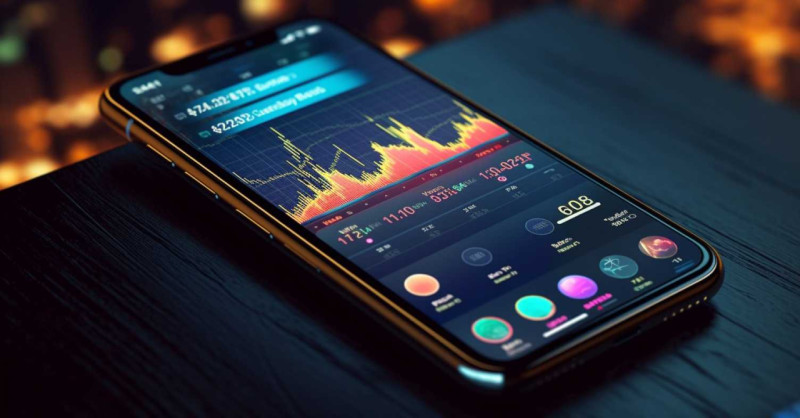
Reviews and Reputation
In the digital age, where word of mouth has transformed into clicks, shares, and reviews, the reputation of a trading app becomes a powerful metric of its credibility and efficacy. While the app's features, fees, and functionalities are essential, the experiences of fellow traders provide invaluable insights into its real-world performance.
Listening to what other traders are saying offers a more holistic view of the app. Positive reviews can underscore its strengths, revealing facets like user-friendliness, reliability, or standout features that have resonated with the user community. These accolades can serve as affirmations, confirming that the app delivers on its promises and stands out in specific areas.
Conversely, common complaints shed light on potential pitfalls or areas of improvement. While no platform is perfect, recurring grievances from multiple users can highlight systemic issues, be it technical glitches, hidden charges, or unsatisfactory customer support. Being aware of these complaints allows traders to set realistic expectations and make informed decisions.
However, it's also crucial to approach reviews with discernment. While genuine reviews are insightful, the digital space can sometimes be mired with biased opinions or even manipulated reviews. Cross-referencing feedback from multiple sources, be it forums, review websites, or personal networks, can provide a more balanced perspective.
In conclusion, in the vast sea of trading apps, reputation acts as a compass, guided by the collective experiences of the trading community. While technical specifications and features form the foundation, reviews and reputation add a layer of real-world validation, ensuring that traders embark on their digital journey equipped with both knowledge and insights from their peers.
Top 5 Best Trading Apps of 2023
The rapid advancements in technology and the increasing democratization of the financial markets have led to a surge in the number of trading apps available. Each year, this landscape evolves, with new players emerging and established ones refining their offerings. Based on a combination of user reviews, features, security, and overall performance, here's a rundown of the top 5 trading apps of 2023:
AlphaTrade Mobile: Dominating the charts this year, AlphaTrade Mobile is renowned for its intuitive interface that seamlessly merges simplicity with advanced trading tools. With a vast array of assets available for trading, from traditional stocks to emerging digital currencies, it caters to both novices and seasoned traders. Its state-of-the-art security protocols, coupled with a rich repository of educational resources, make it a favorite among users.
NexaInvest Platform: A close second, NexaInvest has made significant strides in 2023 by focusing on real-time analytics and AI-driven market insights. Its unique feature is its predictive market movement tool, which leverages machine learning to provide traders with potential market trends. The platform's commitment to transparency, evident in its clear fee structure and absence of hidden charges, has garnered it significant acclaim.
TradePulse: Building on its success from previous years, TradePulse continues to be a preferred choice for many. Its standout feature is its collaborative trading rooms, where traders can discuss strategies, share insights, and even replicate successful portfolios. This community-driven approach, combined with robust security features, positions TradePulse as a holistic trading platform.
QuantumFolio: Catering to the tech-savvy generation, QuantumFolio introduces quantum computing into the trading realm. By processing vast amounts of data at unparalleled speeds, it offers users insights that were previously unimaginable. While it caters predominantly to expert traders, its suite of tutorials and learning modules ensures that even beginners can leverage its advanced features.
EcoTrader: In the age of conscious capitalism, EcoTrader has carved a niche for itself. Focusing on sustainable and eco-friendly investments, it allows traders to invest in a future that aligns with their values. Beyond its ethical stance, the app is known for its user-friendly design, low fees, and a transparent approach to trading.
While these apps have been recognized as the top contenders in 2023, it's essential for traders to remember that the best app is one that aligns with their individual needs, strategies, and financial goals. As the digital trading landscape continues to evolve, staying informed and adaptable remains the key to success.
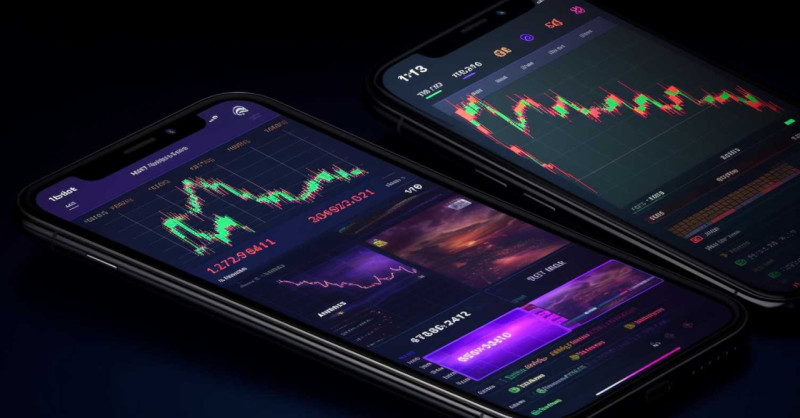
How to Get Started with Your Chosen Trading App
Embarking on your digital trading journey might seem daunting, but with the right guidance, it can be a smooth and enlightening experience. Once you've sifted through the plethora of options and chosen a trading app that resonates with your needs, the next step is to set up and familiarize yourself with the platform. Here's a cohesive guide to help you navigate this process:
1. Account Creation: A Foundation for Your Journey
Initiating your trading journey begins with creating an account. Typically, this process is straightforward:
- Start by downloading the app from a trusted source, such as the official website or app store.
- Open the app and locate the 'Sign Up' or 'Register' option, usually prominently displayed on the welcome screen.
- You'll be prompted to enter personal details, which often includes your full name, address, email, and sometimes even tax identification or social security number. This information is essential for regulatory compliance.
- Choose a strong password. Ensure it's a combination of letters, numbers, and symbols to enhance security.
- Once the details are filled in, there might be a verification process, which usually involves confirming your email address or phone number. This step adds an additional layer of security to your account.
2. Initial Setup and Customization: Tailoring the App to Your Needs
After account creation, optimizing the app to your preferences can enhance your trading experience:
- Familiarize yourself with the app's dashboard. Understand where essential features, like market overview, portfolio, order placement, and analytics, are located.
- Set up notifications. Enable real-time alerts for price movements, news, or any other indicators that align with your trading strategy.
- Customize your watchlist. Add assets or markets you're interested in to ensure they're easily accessible.
- If the app offers a 'dark mode' or other visual customization, adjust it based on your preference to ensure prolonged use is comfortable for your eyes.
3. Best Practices for New Users: Sailing Smoothly in Digital Waters
As you start trading, keep these best practices in mind to ensure a seamless experience:
- Begin with a demo or practice account if the app offers one. It lets you understand the platform's intricacies and test trading strategies without any financial risk.
- Regularly update the app to benefit from the latest features and security enhancements.
- Use the educational resources provided. Whether it's articles, webinars, or tutorials, these can deepen your market understanding and refine your strategies.
- Ensure that you log out from shared or public devices to maintain the security of your account.
- Periodically review your account's security settings and consider changing passwords to bolster security further.
Diving into the world of digital trading is an exciting endeavor. By following this guide, setting up, and optimizing your chosen trading app, you can ensure that your journey is not only profitable but also enjoyable and secure.
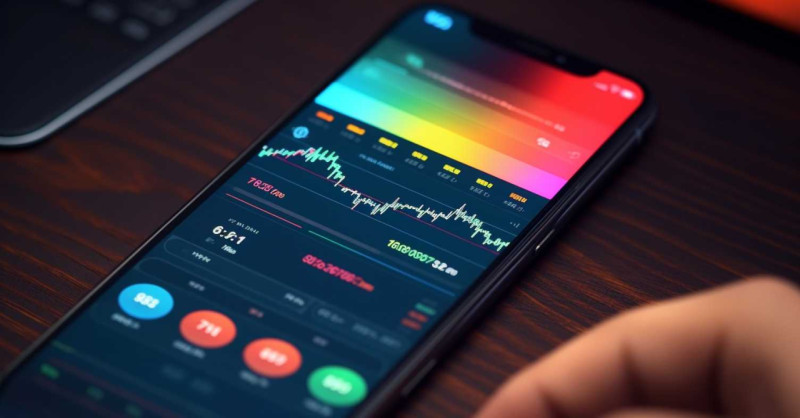
Conclusion
In the dynamic realm of digital trading, where the winds of market trends can change direction swiftly and the waves of data flow ceaselessly, the vessel that navigates these waters—the trading app—plays a pivotal role. As we've journeyed through the various facets of selecting the right trading app, it's evident that this choice, often perceived as a mere technical decision, carries profound implications for a trader's experience, success, and security.
While features, fees, and functionalities are undeniably crucial, the essence of the perfect trading app lies in its alignment with a trader's individual needs, strategies, and aspirations. It should act as an extension of the trader, amplifying their strengths, compensating for their limitations, and always ensuring that they're a step ahead in the intricate dance of numbers, decisions, and timings.
As we anchor this discussion, it's paramount to remember that the world of trading is as vast and diverse as the traders themselves. Thus, while guides and reviews can illuminate the path, the onus of choosing the right companion for your trading journey lies with you. It's a decision that warrants research, reflection, and a touch of intuition. So, as you sail forth into the vast ocean of opportunities, ensure that you arm yourself with knowledge, weigh your options, and choose a trading app that resonates with your unique trading cadence. The markets await, and with the right app by your side, the horizon is filled with limitless potential.
















